We, travellers, always enjoy exploring new places and unfamiliar environments. One of the ways to expand your adventure opportunities is by learning scuba diving. You can travel to a new country, enjoy the culture, food, nature and then dive into the water and experience the untouched underwater world. Doesn't it sound thrilling?
Do you want to get a scuba diving certification, but not sure where? This was me a few years ago, I could either get my PADI certification where I live, in London, by practising in a pool or travel to one of the best scuba diving places and get certified. I think you can easily guess what I opted for.
There are a lot of amazing places to choose from, this is why, in this post, I and my fellow travel bloggers shared our own experiences to help you choose the best places where you can learn scuba diving.
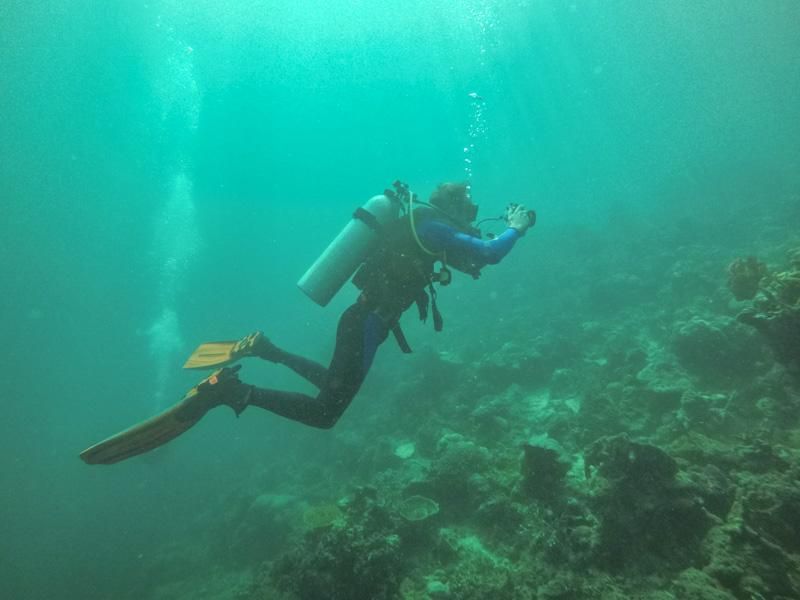
This post contains affiliate links and if you click one I may receive a small commission at no extra cost to you.
You can also read: Best Gifts for Scuba Divers
Phuket in Thailand
Recommended by Mansoureh (myself)
Phuket in Thailand is famous for its beautiful beaches and blue waters. Here is where we began our scuba diving journey. There are various dive centres, but after doing some research and reading reviews we booked our 3-day PADI Open Water course with All4diving. The course costs 13,900 Thai Bahts (around 334 Pounds) and includes 6 boat dives, or you can opt for only 4 dives at a cost of 12,900 THB.
The centre has instructors from all over the world and you can also choose in which language you want your instructors to teach you. Since we were travelling from the UK, we did our course with a British instructor.
Diving in Phuket means you can easily go to some of the most amazing dive sites in Thailand including dive sites near the Phi Phi Island. The visibility is 15 to 20 meters and if you are lucky you might even experience visibility of 30 meters. The water temperature is around 30 degrees, which means you can dive with shorty wetsuits.
By diving here you will be able to see different types of marine life including corals, angelfish, clownfish, butterflyfish, hawksbill turtles and if you are lucky, zebra sharks.
Punta Cana in the Dominican Republic
Recommended by Mansoureh (myself)
The Dominican Republic is a Caribbean country with more than 50 miles of white sandy coast. Punta Cana on the east coast of the country is well known for luxury holiday destinations and all-inclusive resorts.

While staying in Bahia Principe Grand Bavaro resort for our holiday, we took a PADI Advanced Open Water course and improved our scuba diving skills. Most of the resorts in Punta Cana have a PADI centre and with a short boat ride, you will find yourself in some of the most amazing dive sites in the country.
Some people prefer to take their PADI Advanced certification straight after getting the PADI Open Water certification, but others, like us, prefer to take them separately at different locations. In Punta Cana, you can have some fun dives while learning to scuba dive.
All the resorts have different swimming pools where you can practice or go for a Refresher dive if you didn’t dive for a while to get comfortable underwater before heading to the ocean.
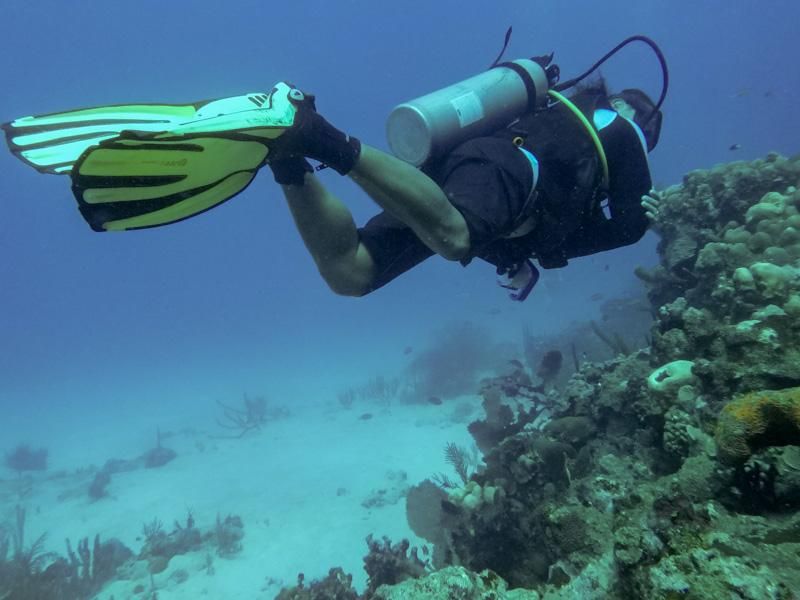
There are 24 dive sites around Punta Cana at depths between 8 and 20 meters. In some sites, you will also be able to swim through coral reefs. You can see different species of fish and sea turtles. The water temperature is between 25 and 28°C throughout the year.
Coron in the Philippines
Recommended by Alice from Teacake Travels
If you're going to learn to dive, travel from El Nido to Coron in the Philippines! I had never even snorkelled before but on a mission to become a water baby and see what lies beneath, I 'dived' right into getting my Open Water and Advanced PADI together one after the other. This took 7 days all in all.
What makes Coron so special is that there are 11 Japanese shipwrecks within its waters. I was fortunate enough to see Lusong Gunboat, East Tangat Gunboat, Okikawa Maru and Akitsushima whilst taking my certifications here. Yes, the waters are ridiculously clear!
After lots of research and recommendations, Rocksteady Dive Center (now known as Reggae Dive Center) came out on top. They're incredibly supportive, lots of fun and will do everything to make sure that you're above board when you go overboard.

Coron island is really friendly too, and well worth visiting above and beyond its incredibly popular neighbour, El Nido. Make the effort to come here and you won't regret it. Have fun diving!
The Great Barrier Reef
Recommended by James from The Travel Scribes
Is there any more bucket list-worthy experience than learning how to scuba dive in the globe’s largest reef system? If you’re wanting to kick off your scuba career (or get another notch on that diving belt), then diving on the Great Barrier Reef in Australia is a must.

Usually best explored from the coastal town of Cairns, the Great Barrier Reef (GBR) is intoxicating in its beauty: nearly 3,000 brightly-hued reefs, 900 islands and more than 1,500 types of fish, plus the resident whales and dolphins. It’s the planet’s largest World Heritage area, and so honestly, a mind-blowing experience if you want to learn (or further develop) your scuba skills.
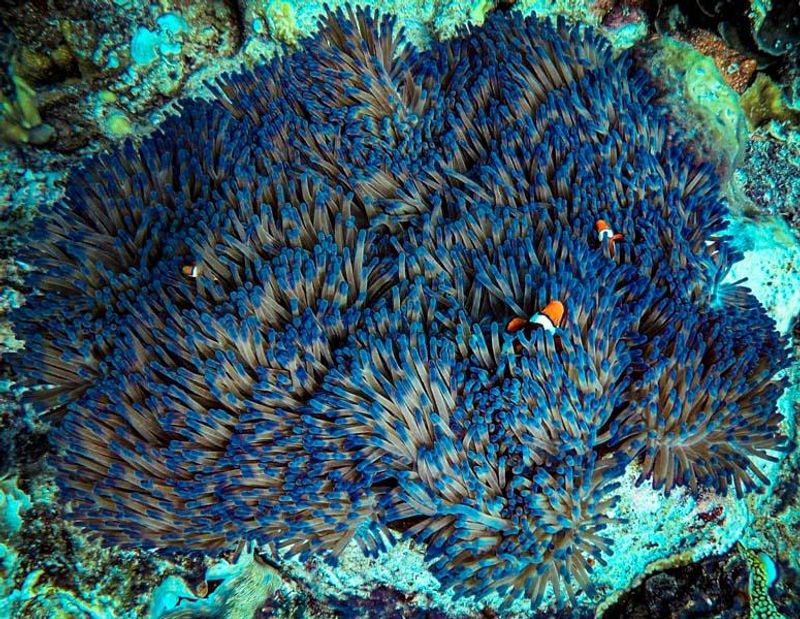
If you’ve already got your PADI Open Water certificate, then you could always just jump onto a day trip with one of the top-notch dive schools and operators in the area, like the award-winning Diver’s Den.

Alternatively, book yourself one of their courses that includes an overnight trip on a liveaboard vessel, Ocean Quest. In that way, you can do your certification over four days and one night, waking up early and diving straight into the crystal clear waters of the Norman, Saxon or Hastings reefs, and surrounding yourself with the beautiful white-tip sharks, barracudas and bannerfish that make the GBR one of the world’s most incredible experiences.
North Shore of Oahu in Hawaii
Recommended by Jordan from Inspired by Maps
One of the best places to learn to scuba dive has to be the North Shore of Oahu in Hawaii. Not only is it very safe and well-managed, but all your dives will be shore dives. It means you always feel very comfortable and don't have the added stress of being thrown in the middle of the ocean if you are nervous.
And it is undoubtedly more exciting than learning to dive in a swimming pool. I took my open water and advanced diving courses at the same time and took about a week.
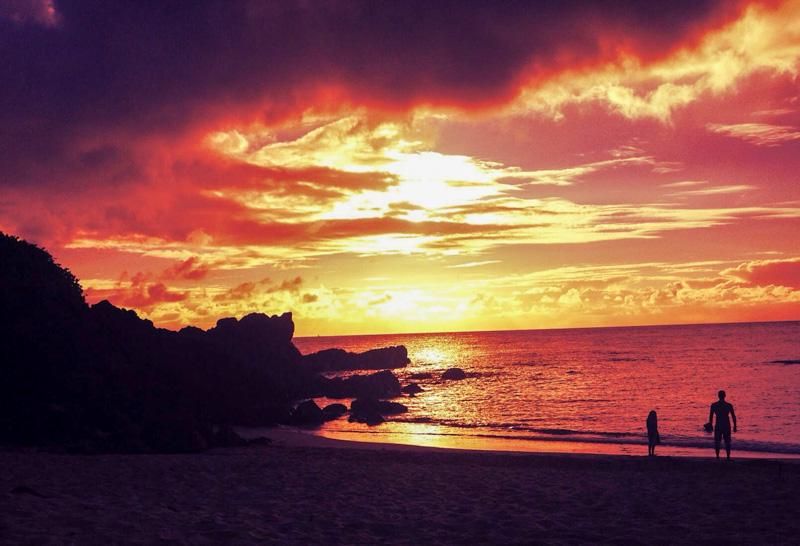
I was a little obsessed with the incredible shore diving offered directly into the Pupukea Marine. Life Conservation area, so I also stayed a few extra days than I was meant to. The underwater topography is fantastic, including coral, caverns, and lots of marine life. Night diving is also incredible there! On my first ever dive, I saw turtles and sharks and got to complete all my coursework on the beach with the waves lapping only meters away.
After diving, I stayed across the road at a hostel - meaning everything was incredibly easy and stress-free. And I could come back for sunsets every night! The visibility of the water was around 20m - and still to this day, some of the best diving I have ever done. It's a large part of why I think Oahu is the best Hawaiian island to visit.
The Red Sea in Egypt
Recommended by Rai from A Rai of Light
Pristine coral reefs, crystal clear waters, and an abundant marine life makes the Red Sea and the surrounding islands a good choice to scuba dive.
Egypt is one of the richest countries in Africa and the region offers a luxurious getaway in a natural, undisturbed setting. The many different dive sites, all within close proximity of the beach resorts are easily accessible by speedboat, to suit recreational divers of all skill levels.

El Gouna and the Strait of Gubal, in particular, are two of my favourite areas that offer an abundance of enjoyable dive sites with shipwrecks aplenty. It boasts beautiful hard and soft coral gardens, sandy bottom sites - some shallow, some deep, as well as muck diving. The PADI Open Water course was made up of a mix of theory sessions, dive skill sessions in confined water, and open water dives in the Red Sea from the boat.
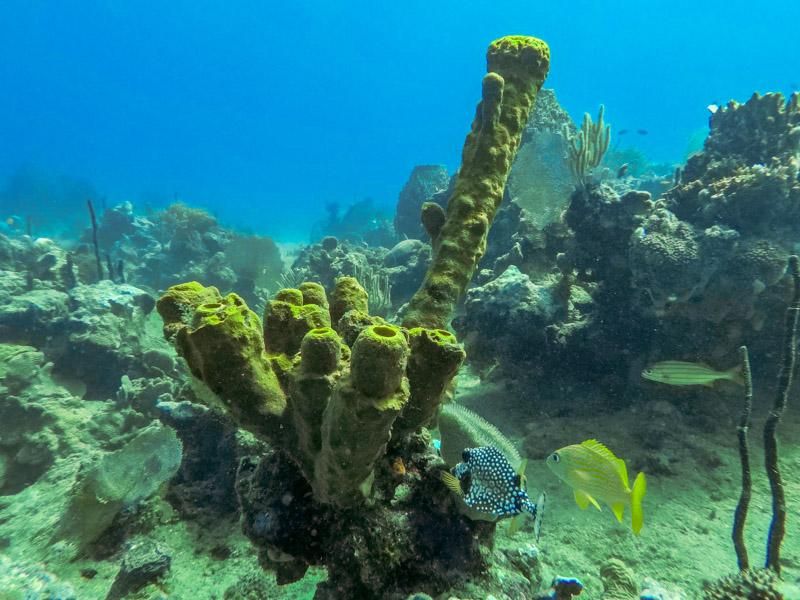
The diving season here is between March and May with visibility between 20 to 50 metres while the light can penetrate down to 60 metres. In addition to your typical tropical marine life, expect a diversity of tropical reef life as well as an abundance of sea life including oceanic whitetip shark and schooling hammerheads.
Cozumel in Mexico
Recommended by Sandra from BlueMarble Vagabonds
Cozumel is an island off the southeastern coast of Mexico's Yucatan peninsula and it is considered to be one of the best places in the world to learn scuba diving.

Here you’ll dive along the second largest barrier reef in the world and many claim the underwater world around Cozumel is even better than the one at Great Barrier Reef in Australia. We can’t comment that since we haven’t been to Australia yet, but scuba diving in Cozumel was simply amazing.
We took the PADI Open Water Course which lasted for four days and comprised of a theoretical part, three beach dives, and two open water dives from big boats. The marine life in Cozumel is vibrant and abundant and visibility is superb. During easy dives in shallow waters or fun wall drifts you’ll see tons of colourful fish, corals and sponges, but also moray eels, lobsters, turtles, rays, or nurse sharks.

And if you’ll have stunning eagle rays elegantly sliding past you after your first minutes underwater, you’ll be probably hooked for life as we were.
Byron Bay in Australia
Recommended by Chris from Stoked For Travel
When it comes to ocean vibes Byron Bay is one of the top beach destinations in Australia. Alongside the amazing surfing in Byron Bay, there’s also some insanely good scuba diving too - with Julian Rocks being rated as one of the best dive sites in Australia.
Learning to dive in Byron Bay is pretty epic and I highly recommend Byron Bay dive centre - with their amazing crew, modern gear and heated training pool, its the ideal setup to learn to dive with confidence.

Sure it’s not quite the tropical, colourful corals of spots like the Barrier Reef, but Julian Rocks offers some incredible dive encounters - with heaps of turtles year-round and depending on the season you’ll also be able to swim alongside Grey Nurse Sharks, Leopard Sharks and even manta rays.
And of course, during whale migration season you’ll be serenaded underwater by these gentle giants too!.
As a destination, there's plenty of non-diving things to do in Byron Bay too - with loads of restaurants, bars and nightlife, surrounded by heaps of fellow travellers
So if you’re looking for the perfect spot to get your dive course done in Australia, Byron Bay would be one of my top picks!
Jeju Island in South Korea
Recommended by Marie from Bemariekorea
The exotic Jeju Island is a stunning and extremely popular holiday destination among Korean and foreign tourists. The island is often referred to as the Hawaii of Korea. Not only is it stunning, but it also has so much to offer, from great hikes to amazing beaches, yummy food and great water activities like kayaking, snorkelling, diving and much more.
All around the island, there are many different diving spots and schools. But the creme de la creme diving spot is around the Seongsan Ilchulbong (sunrise peak). This natural phenomenon is a volcanic crater created more than a hundred thousands years back as a result of volcanic eruptions. This sight is now a protected UNESCO heritage site.

The warm water around the peak attracted a wide array of tropical marine life and soft corals, which are absolutely stunning. Diving in Jeju Island and the rest of South Korea is mostly a summer activity as the rest of the year the water will be too cold for divers and instructors. On top of that during autumn and winter, the currents around the island are rather strong and dangerous for inexperienced divers.
The recommended school to dive with is Seongsan Diving Resort as it offers diving packages to both unlicensed and licensed divers, making this the best location for beginner and advanced divers. It is recommended to rent a car, but the school is also accessible using public transportation. When visiting Jeju Island, stay in a hotel in Jeju City and use this as a base to explore the island.
Tenerife, Canary Islands
Recommended by Steph & Lewis from Book it Let’s Go
We learnt to scuba dive on holiday in Tenerife in 2009. Tenerife is a great place to learn to scuba dive because of the diversity of the dive sites. It is also a year-round scuba diving destination with water temperatures staying between 19-24 Celsius and there are various dive centres to choose from.
The PADI Open water course was four days. We completed our confined water dives in a pool and just off the beach in Puerto Colon where we learnt all the skills necessary to become a diver.
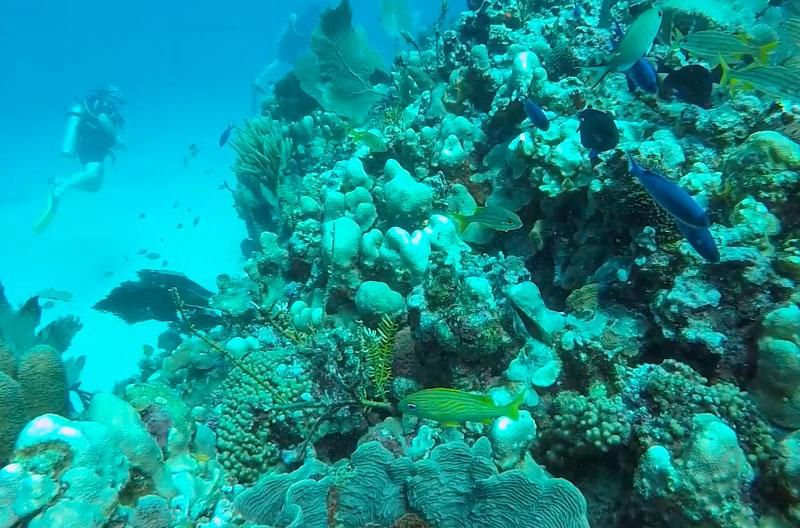
When we had ticked off the skills and completed the textbook training, we progressed to our open water dives. Tenerife has some great dive sites for all abilities and on our first open water dives, we saw shoals of fish, rays and turtles. We also visited some shallow wrecks and did a cave dive that was suitable for Open Water Divers which was an exciting experience.

Once we had a taste for the amazing underwater world, we decided to get our Advanced Open Water certification which was another three days learning and diving.
Getting our advanced open water license allowed us to dive to 30 meters deep, which meant we could go to more sites in the area. By completing the deep-diving course in Tenerife, we could go to some dive sites with 40 meters depth.
St. Lucia
Recommended by Darek from Darek and Gosia
St. Lucia is one of the most beautiful Caribbean islands. With twin volcanic peaks called Pitons, stunning beaches, rainforests, and many small fishing villages there are so many things to do in St. Lucia. The island is also famous for its beautiful coral reef with the Anse Chastanet resort being one of the best places to learn scuba diving.

The Anse Chastanet coral reef holds a treasure trove of marine life at various depths. On a plateau of two to eight meters, divers can see colourful sponges, soft and petrified corals, and brain corals. Frogfish inhabit a large cave nearby, and divers can spot many varieties of fish in the coral gardens, including parrots, goats and barracuda. The edge of the plateau is a wall that drops 46 meters into the ecosystem of a coral colony inhabited by lobsters and eels.
Above the surface of Anse Chastanet is a protected beach with a beautiful view of the Pitons.
So, if you are looking for a perfect place where you can learn scuba diving then Anse Chastanet in St. Lucia is a great choice!
Jordan
Recommended by Rosie from Flying Fluskey
Jordan is a small country with a lot to offer. For divers, the greatest draw is Aqaba, at the Northern edge of the Red Sea. The water here is absolutely perfect for beginners and it is where I began my PADI dive training.

The Gulf of Aqaba is shielded from the swells of the ocean and the relative calm of the water means it is both very clear, and very warm. It is also free of strong currents, unlike some spots across the Red Sea in Egypt.
Although Aqaba is the main town in the area, budget travellers like me head south for the dive camps. Most of these have their own dive schools/trainers and so arranging a course is incredibly easy and a real bargain, with courses more akin to the price you’d pay in Southeast Asia than Europe. Most divers start with some pool training in small, freshwater pools before taking to the sea. The instructors at Bedouin Garden Village were fun and very passionate, taking the time to make sure I was comfortable with every stage of the course before moving onto the next skill or depth.

The Red Sea around Aqaba is teeming with life and so even on my very first sea dives, there were lots to see. Small darting fish, colourful soft coral rippling in the wash and one big, grumpy looking eel. Sadly, my budget was so tight that I couldn’t complete the whole PADI Open Water course here. Instead, I took roughly half of the tests and dives, obtaining a certification called PADI Scuba Diver. This enabled me to pick up where I left off at another time and I finished it the following year all the way in Borneo.”
Point Lookout, North Stradbroke Island in Australia
Recommend by Keith from Travellin’s Lite
Point Lookout on North Stradbroke Island is located a short distance off Brisbane; the capital city of Queensland. Access to the island is by water transport only, as there is no connecting bridge.
Manta Lodge and SCUBA Centre is located right at Point Lookout. It’s a one-stop-shop to learn to SCUBA dive; as it caters for beginners wanting their open water dive qualification, advanced open water through to speciality courses covering Nitrox diving, technical aspects of diving such as managing decompression dives to those wishing to become Dive Guides and Divemasters.
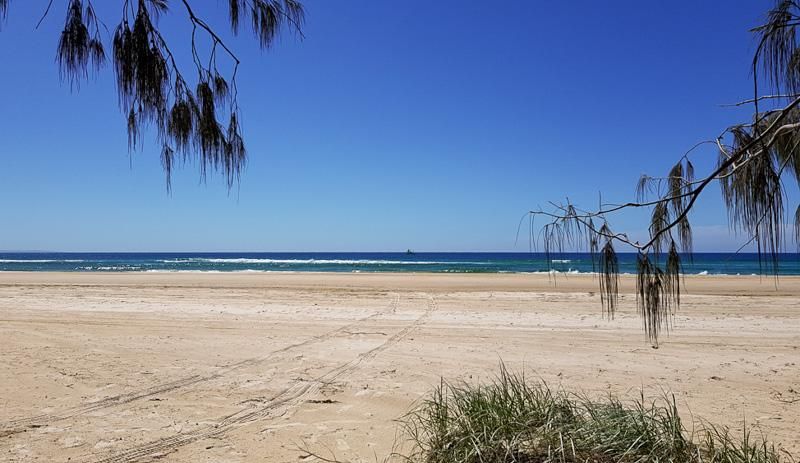
They also offer budget accommodation within the centre, which is a great plus.
Dive conditions typically have visibility of around 15 – 20 metres, with diving depths between 5 metres and 35 metres.
I did my Open Water dive course there some years ago, which now covers theory, followed by 1 day of pool training and 2 days of open water training. I thoroughly recommend it.
Off Point Lookout, there are some of Australia’s best dive sites, which makes it perfect to learn to Scuba dive. There are over twelve dive sites within a short boat ride of the point.
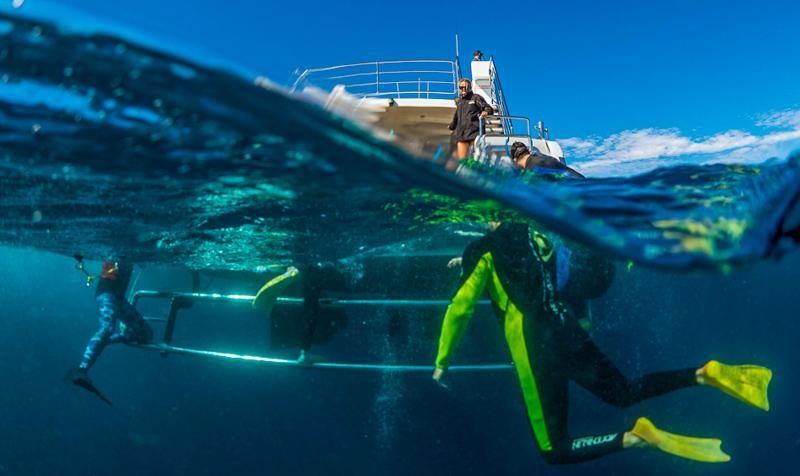
Just two examples:
Manta Bommie – Ranked as one of the top 10 dive sites in Australia. It is a 10-minute boat ride from the beach; and here divers can see Manta Rays, Leopard Sharks, Turtles, Octopus, Pelagics, other large rays such as Bull and Eagle Rays plus hundreds of tropical fish varieties.
Shark Alley – This is home to the beautiful Grey Nurse Shark, which is now an endangered species. Here divers can see them in their natural habitat from June to October. Grey Nurse Sharks are not an aggressive shark, which makes them ideal for divers to experience.
Grenada
Recommended by Vivien from The Dharma Trails
On Grenada’s beautiful Grand Anse Beach there is a small dive shop called Dive Grenada. It is part of the Mount Cinnamon Hotel which has an amazing, tropical beachfront garden and restaurant.
I did my Open Water PADI course here which took a total of 4 days. The first two days we did the theory and practical skills training in the hotel pool. From there I got to experience my first dive on the famous underwater sculpture park (a Jason Decaires Taylor project).

With several different sculptures and arrangements, there was plenty to look at and some great opportunities for photos. The site is shallow (around 6m deep) so it was a good place to get comfortable running through the practice drills. With great visibility and almost no current, it is an easy dive site to manage as a beginner.
Seeing the coral growth make its way around the sculptured faces is something I’ll never forget. Getting an underwater selfie with a variety of unique characters is one of the best things to do in Grenada.
Koh Phangan in Thailand
Recommended by Daniel and Ilona from Top Travel Sights
One of the best places to learn to dive is Koh Phangan in Thailand. We took a PADI Open Water course here and loved every minute of it. In just four days, we learned how to dive. At first, we practised in a pool, but soon, we went out into the open sea.

Koh Phangan is known for its incredible marine life and high visibility. Although we've gone diving in other places since then, we never had visibility as great as on Koh Phangan.
A perfect diving spot for beginners is Sail Rock, where you can see lots of colourful fish, corals and, if you're fortunate, even a whale shark.
Plus, a diving course on Koh Phangan won't break your budget. As the island is full of schools, you can find many great deals. It pays off to compare what their packages include, and to choose the one that is right for you.

In addition to being an excellent location for diving, Koh Phangan also offers many other activities. If you need a break, laze around on the beach. Or rent a motorbike and explore the many waterfalls on the island. And then get back into the water!
El Nido in the Philippines
Recommended by Lotte from Phenomenal Globe
El Nido on the tropical island Palawan is one of the best destinations in the world to get your scuba diving certification. In this incredible underwater world, you can see many types of corals, sea turtles, moray eels, stingrays, clownfish and dozens of other interesting fishes and creatures.
The best part about learning to scuba dive in El Nido is that your practice dives won’t take place in a (boring) swimming pool where there is nothing to see. No, in El Nido you can admire rich marine life while taking a PADI-course and acquiring your scuba diving skills as you’ll be diving in the beautiful ocean from the start.
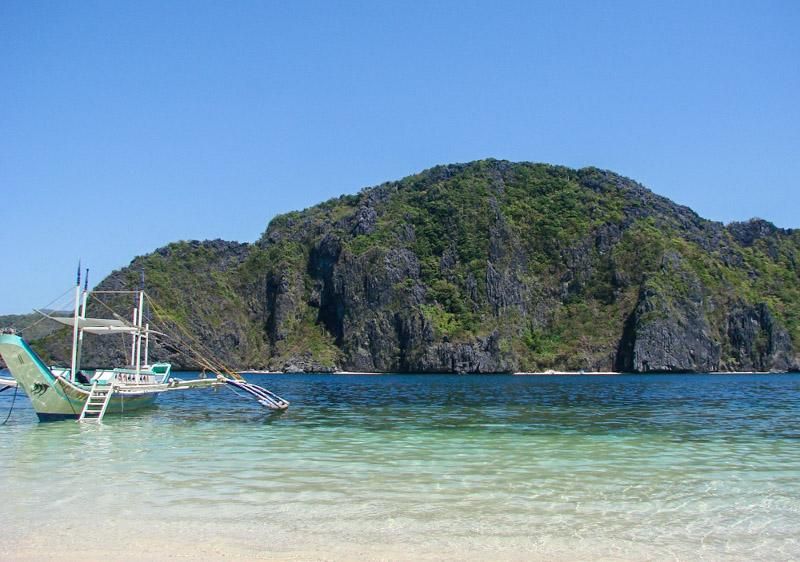
My husband and I did our PADI Open Water Course in El Nido. The course took 3 days (1 day of theory and 2 days of practice dives) and we paid €350/$400) per person for the course.
Visibility is best between March until May, when it ranges between 10-30 meters, depending on the location and the conditions (current, wind, etc). My favourite dive spot in El Nido was Nat-Nat reef near Cadlao Island where we spotted a huge 150-year-old turtle.
Perhentian Kecil in Malaysia
Recommended by Alya and Campbell from Stingy Nomads
Perhentian Kecil island, located about 20 km off the coast of North-East Malaysia, is the perfect place to learn how to scuba dive. Diving from the Perhentian islands is fantastic, the reefs are beautiful and rich in marine life. With more than 20 dive sites around the island accessible by small boat, there are plenty of different sites to dive.
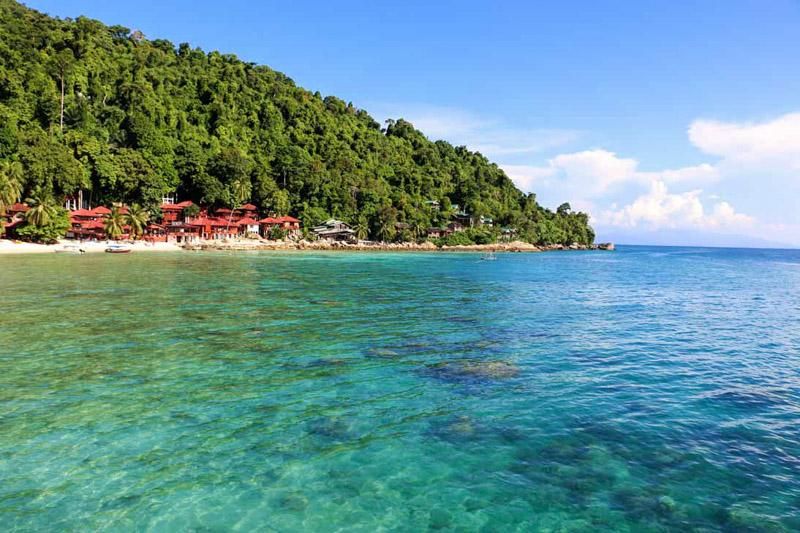
You need 3 to 4 days to complete your PADI Open Water course and Perhentian Kecil is a great place to spend a week with a relaxed island lifestyle, beautiful beaches, and great to explore on foot with no roads or cars.
Diving with Anti Gravity Divers was great, it is a PADI 5 Star Instructor Development Center with friendly experienced instructors, while we were doing fun dives our friends were doing their Open Water and Advanced courses.

The location of the centre is nice and close, a short walk, to the beach. Antigravity has nice facilities with complimentary coffee and drinks. The dive sites around Perhentian island are usually warm, calm and crystal clear, perfect conditions to learn. This is also a great place to continue your dive experience with amazing marine life and beautiful wrecks, deep reefs and good night dives. The dive centre offers free accommodation in basic fan dorm beds to customers doing PADI courses.
Between the dives, chill on the beautiful beaches or explore this amazing island by going by hiking or kayaking.
Utila in Honduras
Recommended by Lora from Explore with Lora
Utila is a small island in Honduras that is an absolute paradise for divers. I did my open water certification in Utila and it was one of my favourite memories of all Central America. It's not only one of the cheapest places in the world to get certified for scuba diving, but the atmosphere of the island is amazing. Everyone who comes to Utila is there to dive and have fun.
The island attracts experienced divers from all over the world, so you will be taught by world-class instructors.
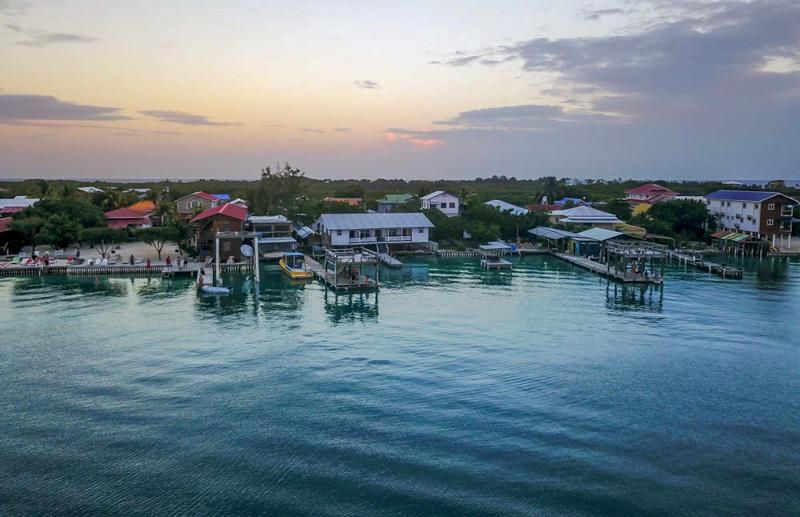
The Open Water course takes four days in total, with most of that time spent outside exploring the amazing underwater world of Honduras. Utila borders on the Mesoamerican barrier reef system, the second largest reef in the world. It's considered to be one of the best places to go diving in the Caribbean!
There are over 100 dive sites with excellent visibility where you can find sea turtles, stingrays, seahorses, lionfish, angelfish, moray eels, nurse sharks, and more.
Maldives
Recommended by Juliet from Live Your Dream Today
My husband and I had our first scuba diving experience during our honeymoon in the Maldives. The visibility ranging from 20 to 40 meters with beautiful reefs makes Maldives one of the best destinations to learn scuba diving. The water temperature stays between 24-33°C throughout a year.

We stayed at Paradise Island Resort that is part of North Male Atoll and had the best experience there! Among many adventurous activities, they have a Padi certified diving centre where you can get an introduction to the underwater world or more thorough courses if you are not a beginner.
We only took one lesson as it was our first attempt of diving. They give you a brochure when you sign up so you can read it and get some initial understanding of the process. It mentioned all the things that could go wrong with your breathing and other stuff and it almost scared me away! But I'm glad I made it to the lesson as it appeared to be an unforgettable experience and not scary at all!

They gave us a 15-minute lesson first then took us into the water and made sure every person learned the necessary gestures. There were only two other couples with us and two instructors for the group. Then we all formed a line and started our first real dive!
There was an underwater rope that we followed one by one that was somehow stretched out through the reef and very gradually took us deeper and deeper. I concentrated on my breathing and seeing all the amazing marine life and I had no idea how deep we were until I looked up and didn't see the surface! The whole process took about two hours and we went 12 meters deep, unbelievable!
Almeria in Spain
Recommended by Paulina from Paulina on the Road
Scuba diving is one of the most fascinating underwater activities. On my holiday trip to Spain, I decided to learn scuba diving to experience the beauty of existing underwater life.
There are many amazing things to do in Almeria, but I particularly travelled there to learn scuba diving since Almeria is a paradise for scuba divers.
I joined Mojacar’s diving school in the southwest province in Almeria. Mojacar has some of the most beautiful dive sites in Spain which are suitable for all levels of divers, from beginners to professional divers.

I took a three-day course of PADI Open Water and learned how to manage my scuba diving gear equipment. Now, I am allowed to dive anywhere across the world with this certification.
The visibility was great which made my experience wonderful. Most dive sites here are reef and in some sites, you will be able to swim through. If you are qualified you can go for deep diving between 27 and 42 meters to visit some wrecks.
The visibility is usually great and I was amazed to see the variety of marine flora and fauna. Here you will be able to see Ocean sunfish, Moray eel, Pollacks and Grouper.
Batangas in the Philippines
Recommended by Katherine from Tara Lets Anywhere
The Philippines is known not only for its tropical beaches but beautiful dive sites as well. The country is naturally rich in marine resources and it is a heaven for scuba divers. Batangas is one of the main diving destinations in the country. It’s only 1-2-hour drive from the capital of Manila.

I did scuba diving in a municipality called San Luis. This is a great option because it’s relatively quiet and there is so much to see underwater, even for beginner divers. I stayed in a resort called Summer Cruise.
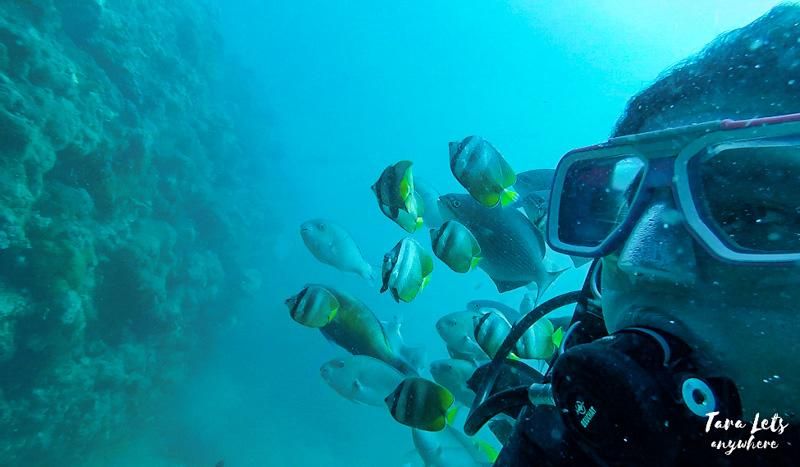
Another nearby dive spot is Binukbok Point which is about 10 minutes away by boat. There you can see schools of jackfish. This is one of the most Instagram-worthy dives you can do because you can swim next or through the formation of the fish. Aside from the jackfish, you can also see various types of colourful corals, giant clams, reef fishes, and sea turtles.
What I liked about diving in San Luis, Batangas, is that it’s beginner-friendly. You do not need to go very deep to see underwater sights and there is so much to see that it’s easy to forget being afraid or nervous.

The visibility here ranges from 3 meters to 20 meters depending on the season. From July to September which is the rainy season the visibility can be poor. November until June is the best time to learn scuba diving in Batangas.




